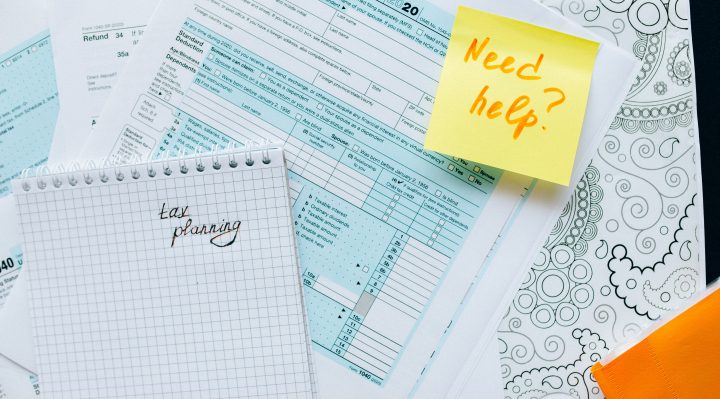Introduction
Tax planning is paying your tax obligations while considering your present financial situation. After considering your age, financial objectives, risk tolerance, and investment horizon, it also includes your overall financial plan. The tax code is considered one of the most complicated law areas. It has been amended repeatedly for simplification, but it can still be difficult for even the best-informed taxpayers to understand.
As you are likely aware, tax is a price the government levies on goods, services, or income. You might try to minimize your tax obligations and safeguard your hard-earned money. This blog will help you better grasp what’s going on with your taxes to determine how to avoid pitfalls and minimize your tax burden.
What is Tax Planning?

Taxes may reduce your annual income. To combat this, tax planning is an acceptable way to lower your tax obligations in any fiscal year. It enables you to make the best use of the tax breaks, deductions, and perks provided by the government to reduce your burden.
Tax planning can be defined in a few words. It involves examining one’s financial status from the perspective of tax efficiency.
Financial planning for tax efficiency is referred to as tax planning. You can do this to make the most of the lawful tax benefits, refunds, exemptions, and deductions available to you. In general, tax planning entails making financial and business decisions to minimize the income tax you must pay to the government.
In plain English, tax planning is just a way to invest in instruments that reduce taxes under various provisions of the Income Tax Act of 1962. It mandates that financial and tax planning be done early in the fiscal year rather than waiting until the last month, week, day, or hour. Every person’s tax planning is based on personal considerations such as age, income, financial plan, and risk tolerance.
Types of taxes
Permissive tax planning: This approach involves making plans by various Indian tax law rules. India has several measures for tax planning, including exclusions, allowances, contributions, and incentives. For instance, the Income Tax Act of 1961’s Section 80C provides various deductions on various tax-saving tools.
Purposive tax planning: Utilizing tax-saving tools with a particular goal is part of intentional tax planning. This makes sure that you get the most return on your investments possible. This entails carefully choosing the right investments, developing a suitable plan to replace assets (if necessary), and diversifying your company and income assets by your residential status.
Long-range tax planning: When you follow this type of tax planning, it aims to reduce your taxes over a long period. It involves maintaining adequate cash reserves and making timely investments in cutting the risk of taxation on capital gains. This is aimed at avoiding taxation of capital gains on retirement and wealth accumulation.
Short-range tax planning: This approach aims to reduce your taxes shortly. It involves generating income (or keeping it) to reduce the risk of taxation on capital gains. It also consists in generating income by investments that are not likely to produce a yield shortly, such as dividend payments and capital gains.
Benefits of tax planning
There are many benefits of tax planning:
Reduced tax liability: Tax planning helps you to reduce your tax liability. It involves taking the right deductions and claiming all the available exemptions, credits, and deductions that apply to you (or your company). Tax planning can be crucial in affecting your future liabilities and investing options.
Productive investment: Tax planning helps you to invest in effective schemes. This aims to generate the highest investment return (by minimizing the risk of taxation on capital gains). It involves selecting suitable investments in line with your financial goals and taking care to reduce risk.
Growth of economy: Tax planning helps you participate in the economy’s growth by engaging in productive investment. This aims to ensure that your investments grow and produce income over time. It involves selecting suitable investments which have the potential to generate a high yield (that may be realized only after some years).
Litigation minimization: Tax planning helps you to reduce the risks of litigation. This aims to avoid unnecessary tax controversies that may arise from your investments. It involves ensuring you maintain a healthy portfolio, thereby minimizing potential liabilities. It also provides a clean record when you apply for loans and insurance.
Economic stability: Tax planning helps you to ensure financial stability. This is aimed at ensuring that your investments are stable and don’t get affected by short-term market fluctuations. It involves selecting suitable investments which have the potential to generate a good income, even during turbulent times. If you are prepared, nothing unexpected can majorly affect your financial charts.
Tips for Effective Tax Planning

Availing of the benefits of Section 80: This clause allows people to claim tax deductions most frequently. This provision states that if a person’s yearly wage is less than a certain amount, they are entitled to tax deductions.
A person can, however, potentially get a more significant tax break if they fund a National Pension Scheme account.
The National Pension Scheme, or NPS, is a retirement plan that encourages working professionals to save aside money for retirement. According to this, since the return rate is about 12 percent, one gets a sizable return on their investment.
Investing in ULIPs: ULIPs are India’s most common type of investment. They are a combination of life insurance policies and mutual funds.
The acquisition is made by locking up the money for a certain amount, say ten years or 15 years. The returns you earn on this locked-up money can be invested further into another scheme (such as an equity fund).
Investing in mutual funds: Mutual funds are an excellent way to invest. They can either be equity or debt oriented. The returns you earn on your investments will help you build up your savings and ensure the stability of your financial situation in the long run.
It is important to remember that mutual funds are unlike a bank account. You can only invest in them through a financial advisor and not directly with the mutual fund company.
Attaining tax deductions on salaries: Most non-permanent assets qualify for this tax deduction. Take a rental home as an example. A person may claim tax deductions within Section 10 if they are currently making payments for their residence (13A).
According to this, if a person must pay rent for the home they live in but also provide receipts for the payment, they may claim tax deductions.
One’s employer typically provides a tax-saving plan known as an HRA. It is computed by subtracting 10% of one’s take-home wage from the actual rent one pay. Fifty percent of a person’s wage may be deducted from taxes if they reside in a metro area. People who live in other cities are eligible for 40% of the pay.
Save taxes through philanthropic activities: If you are a person who is willing to contribute to society and help in improving the lives of others, then it would be wise for you to save tax on your donations.
You can donate money through an HRA or other similar plans. It is important to note that the tax deduction is only applicable if you are a non-profit organization or donate to specific organizations.
How to create a tax plan
There are several ways in which you can create your tax plan. One way is by consulting with an accountant who will help you determine the best way to save taxes. Another way is through self-assessment, where one determines their income and expenses for the year. Following are the steps you should follow to create a tax plan for yourself:
Start a filing system
A great way to save taxes is by starting a filing system. You can create a spreadsheet or use an online application that will allow you to keep track of your income and expenses. This system will help you keep track of your tax deductions and allow you to make adjustments if necessary.
A filing system can be beneficial even if you do not pay yearly taxes. You can use it to determine your tax liability, which is essential before filing an income tax return. It can also help you plan for the year ahead and see how much tax you will have to pay.
Understand tax deduction requirements
You should review the available IRS deductions and the conditions for claiming them before the tax year is too far gone. By doing this in advance, you can be proactive in preparing to file a deduction at the end of the year.
For instance, obtaining a student loan instead of a credit card could be preferable if you are planning to return to school soon and will need a loan to cover your tuition. This is so that you cannot deduct the interest charged on an eligible student loan even if a credit card is used for educational purposes.
Evaluate the tax credits offered
Since tax credits match rupee-for-rupee reductions in your real tax payment, they provide the considerable potential to lower your income tax liability. More frequently than deductions, several tax credit categories are granted each year. Credits often come with a time limit and only apply to certain expenses.
For instance, the federal government now provides taxpayers with a credit that covers 30% of any expenses associated with the investment and installation of solar power equipment, such as energy-generating solar panels, up to an amount that is not limited. You can take the credit if the product has a manufacturer’s certification stating that it complies with legal criteria.
This results in you losing out on a chance to save money if you intend to install solar panels this year but are ignorant of the credit. Additionally, if you learn about the credit after you have installed the boards, you risk losing your eligibility if your panels lack a manufacturer’s certification. Before buying the panels, make sure you are eligible for the credit by being aware of the requirements.
Use an IRA
Instead of a savings account, use an Individual Retirement Account (IRA). A common type of bank account that generates taxable interest is where many taxpayers place their savings.
However, by depositing into a traditional IRA where the interest will accrue tax-free, you can avoid having to pay taxes on the money each year. When you do, you can also be qualified to subtract a specific amount from your income each year for the payments you contribute to the account.
It is suggested to use an IRA account over a savings account since there is also no limit to the size of amounts you can save, and banks usually provide these accounts. It is possible to save money by contributing to an IRA and deducting the amount from your taxable income.
As a result, you can save money by making contributions to an IRA each year. You can also take advantage of tax deductions for these contributions since the interest earned on them will not be taxed as long as you are eligible for the deduction.
Conclusion
Although it is not a surefire way to save money, the best method for saving money is by making smart investments. Investing in stocks and bonds can earn high returns on your investment over time. You will also be able to avoid paying taxes on these earnings as long as you are eligible for the tax deductions that come with them.
If you want to save money, consider investing in an IRA yearly. Banks usually provide these accounts and allow you to save money without paying taxes on the interest earned on them.
Proper tax planning and intelligent investment can help you save money without unnecessary taxes. It can be a great way to cut down your tax liabilities or benefit from proper tax credit options that suit yourself and your business. If you follow an appropriate method, you can save a lot of money and accumulate impressive cash.





